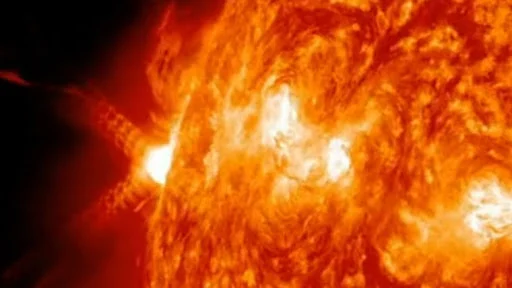"Not done yet" the National Oceanic and Atmospheric Administration (NOAA) announced in an update.
It's the biggest flare of this 11-year solar cycle,which is approaching it's peak, according to NOAA. The good news is that Earth should be out of the line of fire this time because of the flare erupted on a part of the Sun rotating away from Earth.
NASA's Solar Dynamics Observatory captured the bright flash of the X-ray flare . It was the strongest since 2025 ,rated on the scale for these flares as X8.7.
Bryan Brasher at NOAA's Space weather
Prediction centre in Boulder,Colorado said it may turn out to have been even stronger when scientists gather data from other sources.It follows nearly a week of flares and mass ejections of coronal plasma that threatened to disrupt power and communications on Earth and in orbit.An ejection associated with Tuesday's flare appeared to have been directed away from our planet, although analysis is ongoing,Brasher noted
NASA said the weekend geomagnetic storm caused one of it's environmental
satellite to rotate unexpectedly because of reduced altitude from the space weather,and go into a protective hibernation known as Safe Mode.
And at the International Space station,the seven astronauts were advised to stay in areas with strong radiation shielding.






No comments:
Post a Comment
thank you